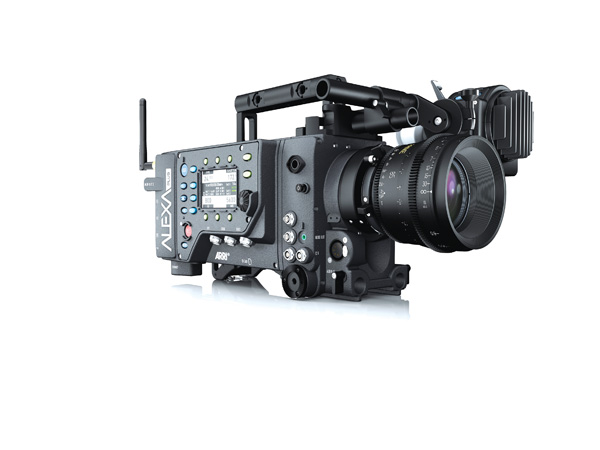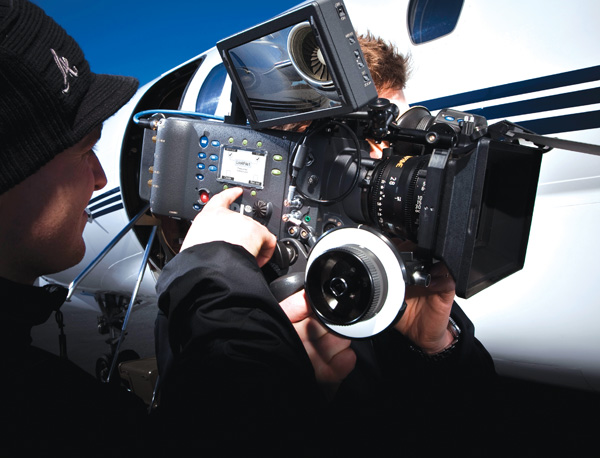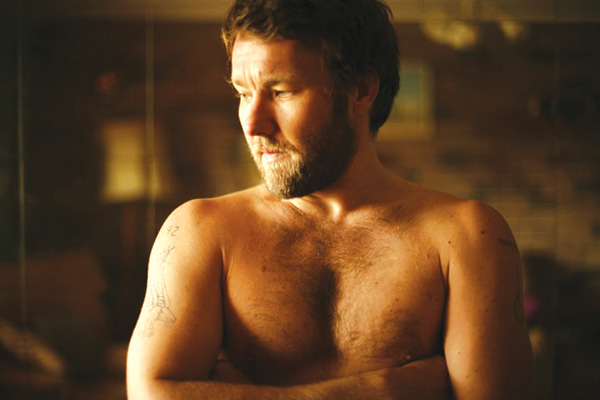
New developments in DI and colour grading have been emerging at two Australian facilities recently, thanks to R&D carried out for recent feature film projects, "Tomorrow When the War Began' and 'Say Nothing'. Their research looks set to pave the way for future productions.
|
|
|
Digital Print System Head of Digital Intermediate Al Hansen conceived and created a colour calibration process he named the Digital Print System, or DPS. With the support of the film's cinematographer, Ben Nott, ACS, Al started work and running tests on a process to completely colour calibrate all levels of the production, ensuring that the images from rushes to post maintained the characteristics of the final 35mm film deliverables. "Ben understood the process and saw the advantage of being able to view all images in relation to the final film print as well savings in time and money on the rushes transfer,' said Al. Ben also recognised the importance of planning for the film's final release while still in pre-production. Once they had convinced the producers the post workflow was achievable, they gained approval to run it. Reference Point "From the beginning I only had to deal with the imagery in the film log space, and look at exposures and colour reproduction within the latitude of the print stocks. The images in dailies, although compressed, were only ever viewed as they would be interpreted by a film print. The result is an offline edit with consistent exposure from cut to cut. That is important not only to the editor and director, who deal with the film in this mode for months before the DI, but also to screenings for Studio Executives and Distributors, which require very little tweaking." Al said, "Because the film is going to be scanned at high resolution and show exactly what has been shot, it's important that it be as similar to the rushes as possible. In any case, it forms the starting point for the creative grade. When it matches the rushes, everyone's notes and ideas can be applied quite easily." Video Rushes But since the advent of non-linear editing, productions can use cheaper, quicker video rushes instead of 35mm print rushes. It has become the norm for feature film rushes to be transferred to tape or Avid via telecine, which has no calibration parameters and means the director, DOP and editor may not be looking at accurate representations of what was actually shot. Grading rushes, often shot to shot, has become an important step to compensate for lack of calibration on telecine, opening the potential for error and a misunderstanding of the traditional film laboratory process. Video Aim Density Until now, the Video Aim Density and DPS had never been combined. The DPS calibrates the telecine to the Northlight 2 Scanner, and is viewed under a print emulation Look Up Table as log-in video. In effect, for 'Tomorrow When the War Began', the DPS emulated on the DP's on-set monitor and digital rushes what the film was going to look like on 35mm print. Hansen treated the entire rushes process like a DI in which everyone was using the same LUT and working within the same parameters as the colourist and DP. All variables across the production had to be eliminated to ensure an accurate workflow. 3D LUT and Calibration "The LUT is the absolutely accurate, 3D viewing simulation of the film path that the DI file will take once we are ready to record to film. It depends on the ARRI recorder and how its parameters are set, the DI stock we will use and which laboratory we will process at. These choices needed to be made first before we could make the LUT, and I needed the LUT before I could calibrate at my end. Before shooting commenced, Al and Ben also had to do a complete calibration loop of the entire process, and then determine the format from a series of camera tests to choose which stocks to use. In order for the DOP to see an accurate result from his camera test, the calibration pipeline needed to be in place. Once he chose his stocks, the team at The Lab incorporated them into the system, and the DOP could add new stocks while shooting if necessary. Ben shot the film with ARRICAM ST and LTs and an ARRI 235, using Kodak 5201 50D and 5219 500T stocks. Grading OPtions To extend the DPS into other parts of the production, The Lab's VFX Supervisor and Lead Compositor on the film Tony Cole helped roll the system and LUT out to all the VFX vendors and the production VFX Supervisor Chris Godfrey, increasing transparency between the original and the completed files. He and Al made several trips to the Hunter Valley shoot location to make sure the monitors were calibrated and the system was working. Into the Future "The Lab Sydney is completing post production on 'Burning Man' directed by Jonathan Teplitzky, including rushes, conform, film scanning and film deliverables, plus about 25 VFX shots. Again, Tony and I worked with the producer, director and DOP Garry Philips, who are using The Lab's DPS on their film across the entire post work flow. We are working on a similar system for digital cameras, a little more challenging due to all the different formats." |
  |
|
Say Nothing Adrian said, "Aside from the ARRI D21, no other digital cinema camera footage I have graded has come as close as the Alexa to capturing the same subtle characteristics of colour and light that 35mm film captures. The extended latitude of the camera outside the photographed intent, and the colour rendition and tonal quality of the captured scene sets is impressive, such as the ability to render extremely subtle differences seen in skin tones." Film Curve "Typically, video footage doesn't afford the Director and DP as much opportunity to control and achieve the look they want when delivering for film. The look is baked in. But the D-21 digital camera demonstrated ARRI's understanding of mapping visible light to emulate a film curve. Because it allowed the use of a more film-like LUT, rushes and the resulting DI, rushes could be graded with simpler, film-style tools. To process the rushes, after camera testing, an initial production LUT was created for the LogC files. Rushes arrived nightly on portable drives and after being checked for data integrity, were laid up and visually checked again in the rushes timeline. The 4:4:4 ProRes files were then QC'd and graded on the 15 ft Digital Cinema screen at Cutting Edge. "Grading the Alexa footage was a simple process using basic RGB Lab Style Printer Lights underneath the Production Lookup table," Adrian said. "On completion, Avid MXF files with appropriate burn-ins were then output directly to editorial. Working on the ARRI 4:4:4 native ProRes files and grading them with traditional colour tools made rushes really straightforward. Using simple photochemical style grading tools with the ARRI Log files lets the cinematographer comprehend the colour and density of the resulting rushes in a way that timed 35mm print dailies used to. Digital Interpretations Tonal Range "This isn't only a problem in the Alexa," Adrian said. "All 'fast' digital cameras are similar. But if the DP were to cut the sensitivity down by 4 stops, for example, to improve the DOF, an unusual problem may become evident – infrared light that is invisible on set would become visible in the footage. ND filters only cut light in the visible spectrum. Thus if light is reduced with ND filters then, in effect, the amount of invisible infrared (near red) light, which the Alexa also captures, is increased and becomes visible in the processed footage. On 'Say Nothing', this characteristic was first noticed because of its effect on fabric dyes in some of the costumes, which looked much redder in the footage." The director did, of course, want to see DOF in the footage and so, once filters were added and the stops adjusted, the look of skies, sunsets and vegetation, in particular, showed evidence of the camera's colour depth. For example, the trees and plants took on a warmer glow than is usual in Australian bush vegetation, which they got to like and called their 'Tuscan' colour scheme. Another advantage came in the ability to show detail across skies even when they formed a background light source behind other detail and character action. Happy Accidents Colour detail in the images retained its natural looks under low lights very well. 'The sun never sets on the Alexa' was an expression the crew started to use when they found they could continue shooting into the evening. "Areas in shadowed parts of an image will maintain colour detail when shadows are lifted. Furthermore, while most video cameras tend to clip colours abruptly in the highlights of the image, the Alexa has a softer clipping point, keeping a lot more detail toward the clipping point. Compression Testing The results obtained from panning shots across resolution trumpets on test charts found that all formats achieved an identical look to each other within about 5 per cent. The Cinedeck uncompressed, or raw, format had the least compression artefacts. Adrian said, "The ProRes broke up slightly in the extreme specular highlights at very high magnification of about 800 per cent but it would be more economical to work with, and 'Say Nothing' is not an effects driven film that needs extra compression detail within the specular highlights for FX artists to work with. While the HD Cam SR also looked good, it exhibited its own visible DCT compression matrices when zoomed up, and ProRes was better than this. "It's true that higher resolutions can be obtained from some other digital cameras – such as 4K images from the RED - but what is of more interest to a filmmaker is how each pixel is interpreted, instead of how many. Thus colour handling is the Alexa's strength, where the aim is to create a sharp, cinematic image with film-like qualities." Dynamic Range Testing |
 |
 |
| Words: Adriene Hurst with Al Hansen, The Lab Sydney and Adrian Hauser, Cutting Edge |
| MORE FEATURE ARTICLES |
| Featured in Digital Media World. Subscribe to the print edition of the magazine and receive the full story with all the images delivered to you. Only $79 per year. PDF version only $29 per year subscribe |





















